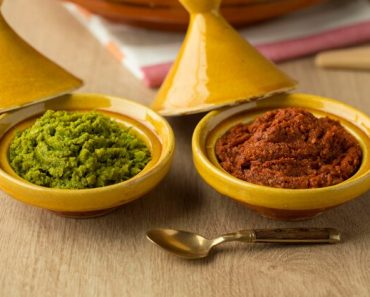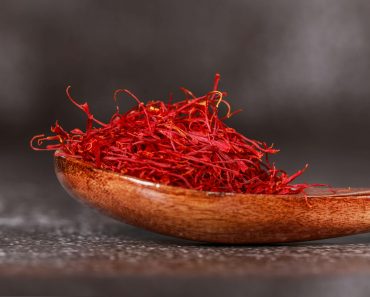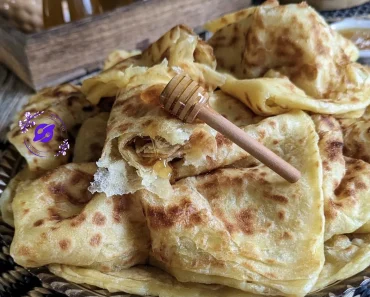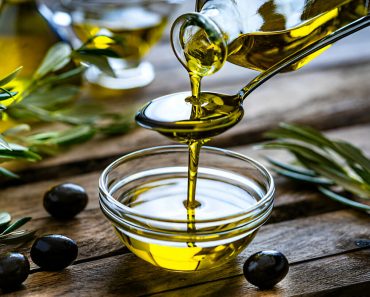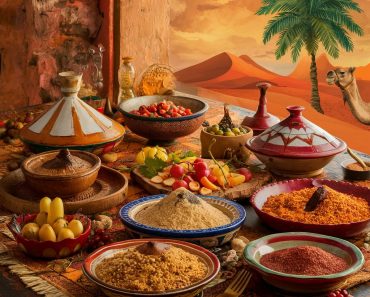Discovering the Timeless Magic of Moroccan Tagine
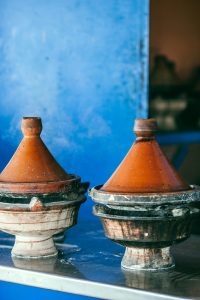
Moroccan Tagine
In the realm of culinary delights, few dishes evoke a sense of mystery and allure quite like the Moroccan tagine. This iconic North African dish, named after the clay pot in which it is traditionally cooked, has captivated food enthusiasts around the globe with its rich history, unique blend of flavors, and aromatic charm. Let’s embark on a journey to unravel the secrets and savors of this timeless culinary masterpiece.
Origins and Historical Significance
The origins of the tagine can be traced back to Morocco, a country renowned for its vibrant culture and culinary traditions. Historically, the tagine was born out of necessity, with Berber tribespeople using simple clay pots to slow-cook meats, vegetables, and spices over low heat. This method allowed for tenderizing tougher cuts of meat and infusing the ingredients with a symphony of flavors.
Over time, the tagine evolved into a symbol of hospitality and communal dining in Moroccan culture. It became customary to prepare tagine dishes for special occasions, welcoming guests with steaming pots filled with aromatic delights. The tagine’s rise to prominence also coincided with the influence of Islamic cuisine, incorporating spices such as cinnamon, cumin, and saffron that are emblematic of the region’s culinary heritage.
The Tagine Maroccan Pot: A Culinary Artifact
Central to the preparation of authentic Moroccan tagine is the tagine pot itself, a distinctive clay vessel with a conical lid. This unique design plays a crucial role in the cooking process, allowing steam to circulate and flavors to meld harmoniously. The gradual cooking at low temperatures helps to retain moisture and tenderize ingredients, resulting in succulent and flavorful dishes.
Traditional tagine pots are often beautifully crafted, reflecting the artisanal skills passed down through generations. They come in various sizes and designs, each serving as a testament to Morocco’s rich craftsmanship and cultural heritage. While modern alternatives like cast iron or ceramic tagines are available, purists argue that the authentic clay pot imparts a distinct flavor and texture to the dish.
Characteristics of Moroccan Tagine
What sets Moroccan tagine apart from other culinary creations is its distinctive blend of sweet, savory, and aromatic elements. A typical tagine comprises layers of flavors, with each ingredient contributing to the dish’s overall complexity. Some key characteristics of Moroccan tagine include:
- Slow-cooked Tenderness: The slow cooking process allows meats, such as lamb, chicken, or beef, to become meltingly tender while absorbing the spices and marinades.
- Aromatic Spices: Cinnamon, cumin, ginger, paprika, and saffron are among the spices that lend a rich and fragrant aroma to the tagine, creating a tantalizing sensory experience.
- Sweet and Savory Balance: The addition of dried fruits like apricots, prunes, or raisins provides a subtle sweetness that balances the savory notes of the dish, adding depth and complexity.
- Nutty Textures: Nuts such as almonds or sesame seeds are often sprinkled on top of the tagine, adding a delightful crunch and nutty flavor to complement the tender meat and vegetables.
- Harmonious Pairings: Tagine is often served with couscous, a staple grain in Moroccan cuisine, or crusty bread to soak up the flavorful sauce, creating a satisfying and hearty meal.
Essential Ingredients in Moroccan Tagine
To recreate the authentic flavors of Moroccan tagine, certain key ingredients are essential. While recipes may vary regionally and based on personal preferences, here are the fundamental components:
- Meat: Lamb, chicken, and beef are common choices for tagine, with each offering its unique flavor profile. The meat is typically cut into chunks or pieces suitable for slow cooking.
- Vegetables: Onions, tomatoes, carrots, and potatoes are frequently used to add depth and texture to the tagine. Eggplant, zucchini, and bell peppers are also popular additions.
- Dried Fruits: Apricots, prunes, and raisins provide a natural sweetness and a touch of tartness that complements the savory spices and meats.
- Aromatic Spices: Cumin, cinnamon, ginger, paprika, turmeric, and saffron are the cornerstone spices that impart the signature flavors of Moroccan cuisine.
- Herbs: Fresh herbs like cilantro, parsley, and mint are used as garnishes or added during cooking to enhance the dish’s freshness and aroma.
- Nuts: Almonds, sesame seeds, or pine nuts are often toasted and sprinkled over the tagine before serving, adding a delightful crunch and nutty essence.
- Oils and Broths: Olive oil is commonly used for sautéing ingredients and adding richness to the sauce. Broths, such as chicken or vegetable, provide a flavorful base for the tagine.
How to Cook Moroccan Tagine: A Step-by-Step Guide
Now that we’ve explored the origins, characteristics, and essential ingredients of Moroccan tagine, let’s delve into the art of preparing this exquisite dish. Follow these steps to create a memorable tagine experience:
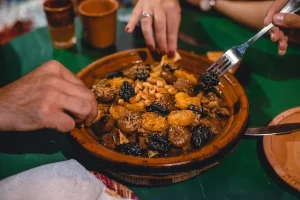
Moroccan tagine
Ingredients:
- 1 lb of lamb, chicken, or beef, cut into chunks
- 2 onions, finely chopped
- 2 tomatoes, diced
- 2 carrots, sliced
- 1 potato, diced
- ½ cup of dried apricots, prunes, or raisins
- 3 cloves of garlic, minced
- 2 tsp of ground cumin
- 1 tsp of ground cinnamon
- 1 tsp of ground ginger
- 1 tsp of paprika
- A pinch of saffron threads (optional)
- Salt and pepper to taste
- Fresh cilantro or parsley for garnish
- 2 tbsp of olive oil
- 1 cup of chicken or vegetable broth
- Water as needed
Instructions:
- Prepare the Tagine Pot: If using a clay tagine pot, soak it in water for at least 30 minutes to prevent cracking during cooking. If using an alternative pot, ensure it has a tight-fitting lid.
- Marinate the Meat: In a bowl, combine the meat with minced garlic, ground cumin, cinnamon, ginger, paprika, salt, pepper, and olive oil. Allow the meat to marinate for at least 30 minutes or overnight for richer flavors.
- Sauté the Ingredients: Heat olive oil in the tagine pot over medium heat. Add chopped onions and sauté until translucent. Add the marinated meat and brown on all sides to seal in the flavors.
- Add Vegetables and Spices: Stir in diced tomatoes, sliced carrots, diced potatoes, and dried fruits of your choice. Sprinkle saffron threads for added aroma and color. Pour in chicken or vegetable broth and enough water to cover the ingredients.
- Simmer and Cook: Reduce the heat to low, cover the tagine with its lid, and let it simmer gently for 1.5 to 2 hours, or until the meat is tender and the sauce has thickened. Check occasionally and add more water if needed to prevent drying out.
- Garnish and Serve: Once cooked, garnish the tagine with fresh cilantro or parsley and toasted almonds, sesame seeds, or pine nuts. Serve hot with couscous, rice, or crusty bread to soak up the flavorful sauce.
Conclusion: A Culinary Odyssey
In conclusion, Moroccan tagine is much more than a dish; it’s a culinary odyssey that celebrates the rich tapestry of flavors, history, and traditions woven into Moroccan culture. From its humble origins among Berber tribes to its status as a global gastronomic delight, the tagine continues to enchant palates and inspire chefs worldwide.
Whether you savor the tender meat, relish the aromatic spices, or delight in the sweet and savory interplay of flavors, each bite of Moroccan tagine tells a story of centuries-old culinary craftsmanship and hospitality. So, gather your ingredients, embrace the art of slow cooking, and embark on your own journey into the enchanting world of Moroccan cuisine. Bon appétit!
